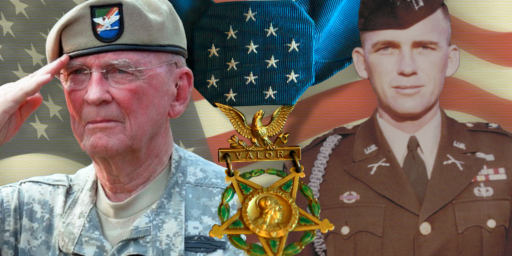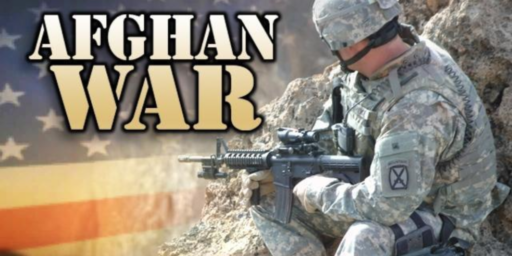Female Amputees: All Troops Are on Front Lines
USA Today fronts the story of female soldiers who have lost limbs in Afghanistan and Iraq, highlighting the problematic nature of sending women to combat zones while trying to shield them from ground combat.
Female amputees make clear that all troops are on front lines (USA Today, p. 1)
On June 19, Lt. Dawn Halfaker and soldiers from her military police platoon were on a reconnaissance patrol in Baqouba, Iraq, when a rocket-propelled grenade exploded inside their armored Humvee, grievously wounding two of the soldiers inside. Dazed and covered in blood, Halfaker mustered the energy to give an order to her driver. “Get out of the kill zone!†she shouted. Halfaker’s right arm was loosely connected to her torso. In the front passenger seat, Staff Sgt. Norberto Lara was in worse shape. His right arm, Halfaker remembers, was severed, a devastating but not mortal wound.
Six days later, Halfaker was a patient at Walter Reed Army Medical Center here, about to lose her arm to a life-threatening infection. Today, as she completes her rehabilitation, Halfaker is considering several job offers in Washington and planning to attend graduate school at Georgetown University after leaving the Army. She is one of five American military women at Walter Reed who have lost limbs from combat injuries in Iraq, a war that marks the first time large numbers of female troops have faced prolonged exposure to daily combat.A decade ago — in the midst of a heated national debate over which military jobs women should occupy — Halfaker’s story might have ignited a battle over whether women should experience the hazards of ground fighting. Today, she and other severely injured female soldiers say, reality has overtaken that debate. Since the ambush that nearly took her life, Halfaker, 25, has done about 30 interviews and appearances, including segments on MSNBC and CNN, and has counseled cadets at West Point. She says she is sometimes asked, often by people her parents’ age, whether women should be so heavily involved in fighting. “Women in combat is not really an issue,†she says. “It is happening.â€
Although women are eligible to fill most jobs in the military, they are barred from some of the most hazardous positions, including infantry troops, special operations commandos, tank crews and others that would place them in front-line ground combat. But they can fly most aircraft, including fighter jets, and serve as MPs and in other jobs that put them in harm’s way.
Guerrilla wars in Iraq and Afghanistan — where front-line and rear-echelon troops often share the same dangers — have rendered the military’s efforts to regulate risk difficult if not impossible. “Everyone pretty much acknowledges there are no rear battle areas, no forward line of troops,†Halfaker says. Since the Iraq war began two years ago, 35 U.S. women have died and 271 have been wounded. Although several hundred American women lost their lives in previous wars, the vast majority of them were nurses or auxiliary troops assigned to rear areas, many of whom died of disease and injuries unrelated to combat.
Now, soldiers in combat arms units (Infantry, Armor, Special Forces, etc.) still take the lion’s share of the casualties. But we should stop pretending that we can put women on the battlefield and still protect them from the hazards of war.
The actual casualty figures for Afghanistan and Iraq:
Deaths
Afghanistan — Men: 169; Women: 6; Total: 175
Iraq — Men: 1,515, Women: 35; Total: 1,550
Wounded
Afghanistan — Men: 439; Women: 3; Total: 442
Iraq — Men: 11,617, Women: 271; Total: 11,888
Note: Totals for dead and wounded inAfghanistan and wounded in Iraq are as of April 9; for dead in Iraq, as of April 18. Sources: Defense Dept., USA Today research
Again, the women’s totals are disproportionately small. From the story:
While women account for about 2% of all combat deaths in Iraq, they play a larger role in the all-volunteer military. About 15% — nearly one in six — of all active troops are female, nearly double the percentage from 1980.
Still, they’re probably higher than most people realize.





“The actual casualty figures for Afghanistan and Iraq:”
You forgot to mention the civilian rates. The figure of those dead in Iraq is around 25,000 Iraqis and 220 foreigners (e.g. contracters, journalists, etc…).
I ‘m not sure about the numbers for Afghanistan.
Kappiy: I didn’t “forget,” they just aren’t relevant to the story. And we really have no clue about the Iraqi civilian numbers.
Kappiy: I didn’t “forget,†they just aren’t relevant to the story.
Breathe, Kappiy. Breathe!